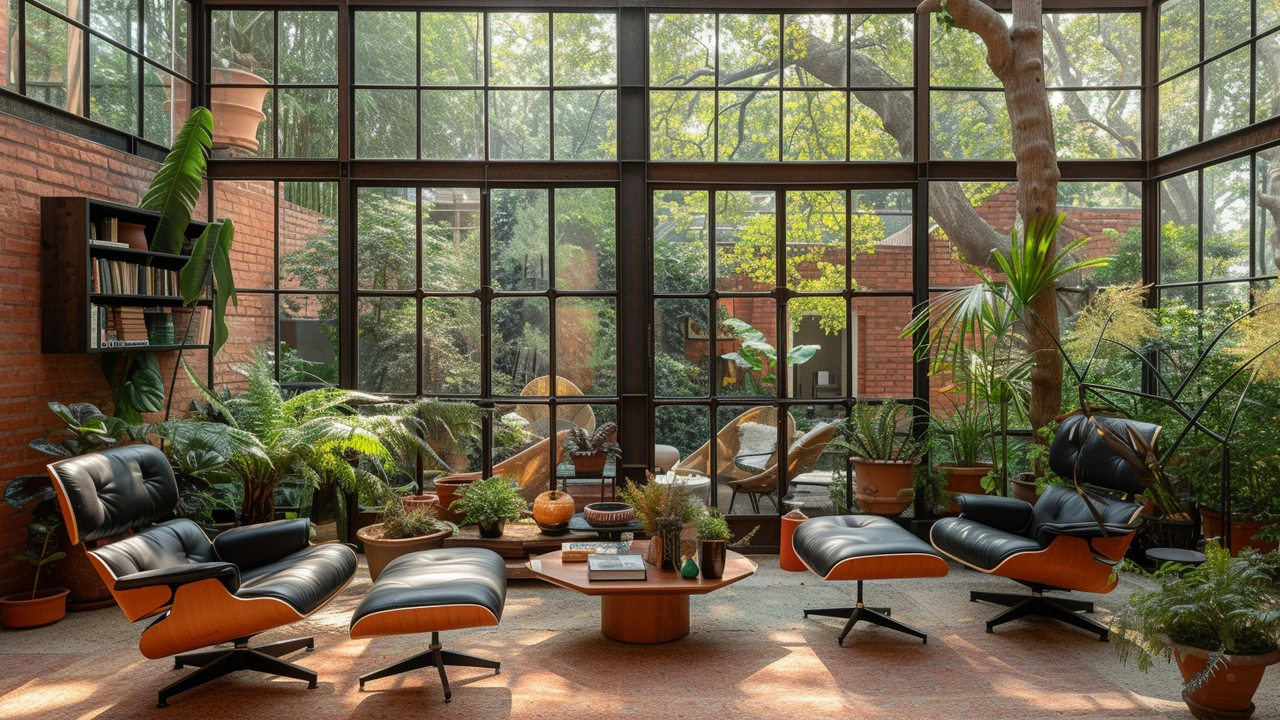Future of Interior Design
Buildings used to be static boxes. The next wave of interiors will be responsive — they change with people, weather. Sensors, adaptive lighting, and sound control already let rooms react without you touching a switch. Expect that to expand into materials that shift texture or color, furniture that reconfigures itself, and layouts that morph from work to rest in minutes.
Design will balance tech with nature. Biophilic elements — living walls, natural light strategies, and plant-rich microclimates — will pair with efficient HVAC and smarter glazing to improve health and cut energy use. Materials will matter more: recycled composites, low-VOC finishes, and engineered timbers offer longer life and clearer environmental footprints. Circular choices — repairable furniture, modular units, and take-back programs — will move from niche to normal.
An aesthetic shift is coming too. Minimalism’s clean lines will stay but get warmer. Expect tactile surfaces, handcrafted accents, and layered light to make simple rooms feel human. Revival styles will be interpreted through new materials: think Gothic arches made from carbon-fiber frames or Beaux-Arts moldings in 3D-printed plaster. Historical shapes will inform spatial feeling while modern tech keeps performance high.
Personalization is a big part of the future. Modular kitchens, adjustable acoustics, and user profiles in smart systems will let spaces adapt to individual routines. Design will be more democratic: apps and augmented reality tools already let homeowners test colors and layouts before buying. Architects and interior designers will use real-time simulation to test daylight, acoustics, and thermal comfort, cutting guesswork.
Health and multisensory design will define premium interiors. Surfaces that reduce allergens, circadian lighting that supports sleep, and materials that buffer noise will be standard in workplaces and homes. Designers will plan for movement with furniture that encourages standing, stretching, and small exercise, not just sofa sitting.
Top trends
Smart adaptive systems, biophilic design, circular materials, and multisensory health features lead the list. Expect AR planning tools, modular mass-custom furniture, and materials tracked by QR codes so you know origin and repair options.
How to start
What can you do today? Start small. Swap harsh bulbs for tunable LEDs. Choose finishes labeled low-VOC. Buy furniture from brands that share repair or recycle policies. Use area rugs, plants, and soft textiles to improve acoustics and comfort. Try an app that previews paint and layout so you avoid costly mistakes.
When hiring help, ask for evidence: daylight studies, material life-cycle data, and smart-system openness (can you change providers?). Prioritize solutions that last and can be repaired. Fast trends fade, but adaptable design endures.
Begin with one room. List activities you need space for and the problems to fix. Prioritize durable finishes and flexible storage. Test smart bulbs and a plug-in sensor before bigger installs. Keep receipts. Start where you can afford today.

Revivalism: The Future of Interior Design
Hey, I'm really excited to share some insights on a new phenomenon trending in the world of interior design: Revivalism. It's a unique blend of bringing the past to life in contemporary spaces, acting as a portal between the old and the new. This is more than just a simple trend, I believe it's the future of interior design. Tune into this post for some first-hand advice and predictions on this emerging trend. Let's journey together into the future of home decor, shaped vibrantly by the captivating charm of the past.
Read more